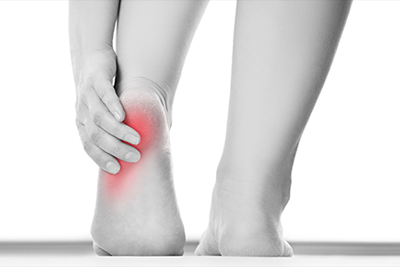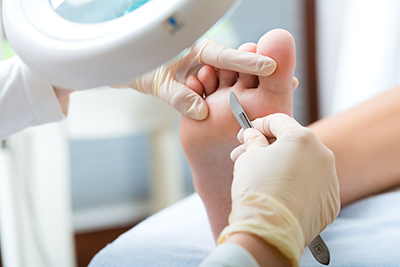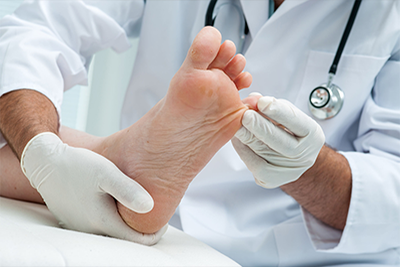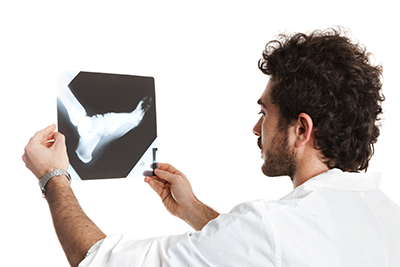Morton’s Neuroma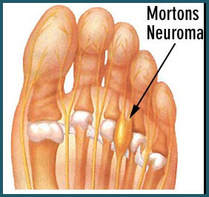
Patient Education Videos
What Is a Neuroma? A neuroma is a thickening of nerve tissue that may develop in various parts of the body. The most common neuroma in the foot is a Morton’s neuroma, which occurs between the third and fourth toes. It is sometimes referred to as an intermetatarsal neuroma. Intermetatarsal describes its location in the ball of the foot between the metatarsal bones. Neuromas may also occur in other locations in the foot. The thickening of the nerve that defines a neuroma is the result of compression and irritation of the nerve. This compression creates enlargement of the nerve, eventually leading to permanent nerve damage. Causes
Anything that causes compression or irritation of the nerve can lead to the development of a neuroma. One of the most common offenders is wearing shoes that have a tapered toe box or high-heeled shoes that cause the toes to be forced into the toe box. People with certain foot deformities—bunions, hammertoes, flatfeet or more flexible feet—are at higher risk for developing a neuroma. Other potential causes are activities that involve repetitive irritation to the ball of the foot, such as running or court sports. An injury or other type of trauma to the area may also lead to a neuroma. Symptoms
If you have a Morton’s neuroma, you may have one or more of these symptoms where the nerve damage is occurring:
Diagnosis
To arrive at a diagnosis, the foot and ankle surgeon will obtain a thorough history of your symptoms and examine your foot. During the physical examination, the doctor attempts to reproduce your symptoms by manipulating your foot. Other tests or imaging studies may be performed. The best time to see your foot and ankle surgeon is early in the development of symptoms. Early diagnosis of a Morton’s neuroma greatly lessens the need for more invasive treatments and may help you avoid surgery. Nonsurgical Treatment
In developing a treatment plan, your foot and ankle surgeon will first determine how long you have had the neuroma and will evaluate its stage of development. Treatment approaches vary according to the severity of the problem. For mild to moderate neuromas, treatment options may include:
When Is Surgery Needed?
Surgery may be considered in patients who have not responded adequately to nonsurgical treatments. Your foot and ankle surgeon will determine the approach that is best for your condition. The length of the recovery period will vary depending on the procedure performed. Regardless of whether you have undergone surgical or nonsurgical treatment, your surgeon will recommend long-term measures to help keep your symptoms from returning. These include appropriate footwear and modification of activities to reduce the repetitive pressure on the foot. |
Additional Services |
Additional Conditions and Treatments
Book Your Appointment Today |



